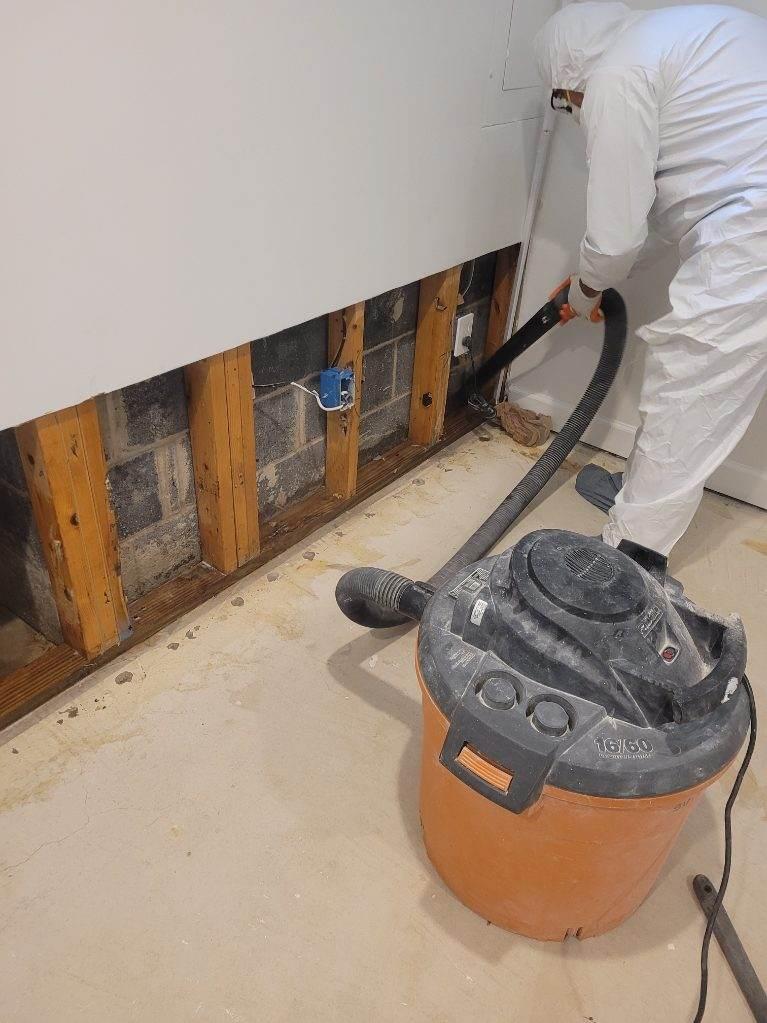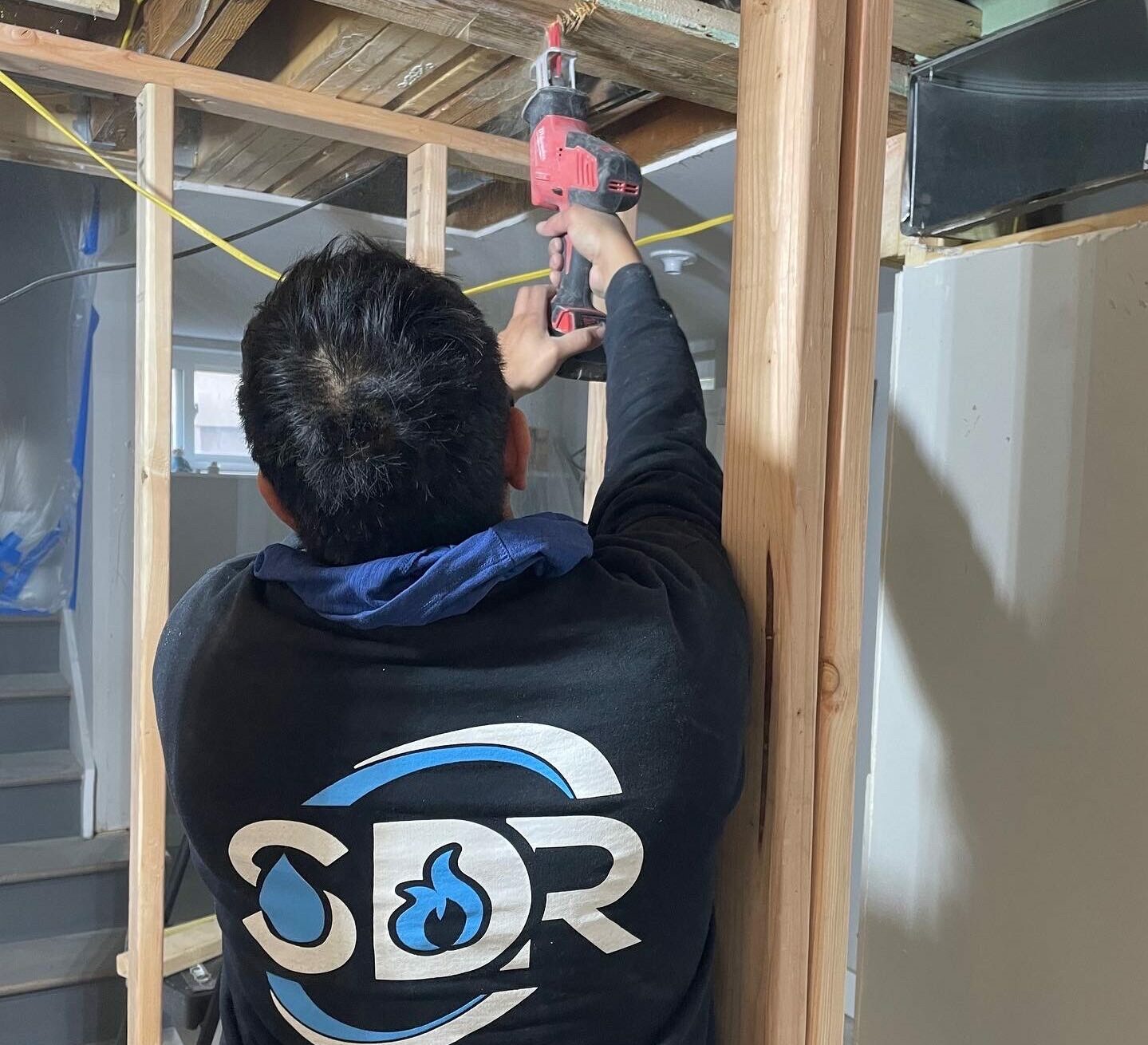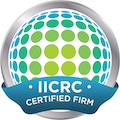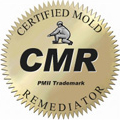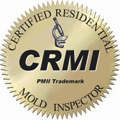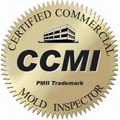Due to an increase in consumers opting for environmentally conscious products over traditional products, and especially in Montgomery County Maryland where only organic or minimum-risk pesticides are allowed for use on lawns and playgrounds, mold remediation companies are left scrambling to decide what products they shouldn’t use and what eco-friendly options provide industry-standard remediation.
The demand for eco-friendly companies and products is increasing among consumers. As the effects of global warming become more extreme, sustainability has become more important. Certain clients are even willing to pay a premium for goods and services that are environmental-sound. Eco-friendly products do not harm the environment. They promote green living by limiting the number of resources used or transferring to a less harmful resource. In recent years the “green/eco movement” has seeped into all industries. Some mold disinfectant companies have attempted to tap into the eco-friendly demographic by relabelling their products with vague terms like “eco-friendly”, “eco-safe” or “green”. Traditional fungicidal disinfectants have been successful in mold remediation for decades. Although studies prove that in small doses these disinfectants don’t harm humans, some of them have damaging consequences on the environment. Green-cleaning clients are more inclined to request products that mold remediation specialists may be unfamiliar with. To further confuse professionals, brands labeled “green” or “eco-safe” are not necessarily environmentally friendly or safe for all individuals. When determining a mediation strategy, knowing what ingredients are in mold removal products will validate the moniker of providing professional, personalized services.
Generally, there are five distinct chemicals used in consumer and commercial mold removal products. They are never combined in any one formula. They are Trisodium phosphate(TSP), Glycol ethers(EGBE or DEGME), Sodium hypochlorite(bleach), borax, and hydrogen peroxide. The product label typically includes critical information pertinent to the contents or ingredients used in a product. If the product label lacks this information, all cleaning supply companies must have their safety data sheets (SDS) available online for public viewing. Identifying the solvent in each product is the first step. Each of these chemical compounds affects the human body and environment differently. When deciding what product to use, keep these basic facts in mind.
Trisodium phosphate- An inorganic chemical compound (Na₃PO₄), TSP is a white grainy or crystalline substance that when mixed with water will create an alkaline solution. TSP is a highly effective cleanser, degreaser, and mold remover. It works on both porous and non-porous materials making the ideal product for professional mold removers. Due to TSP being inexpensive, having a long shelf life, and its ability to be made stronger or weaker by diluting it, it was used in many household cleaning products. Its harmful effects were discovered/studied in the late 20th century. Since 2010 states have placed restrictions and bans on the substance. Trisodium phosphate causes extensive environmental damage and causes eutrophication(deletion of oxygen) in lakes and rivers. TSP is also known to harm vegetation and grass. Although TSP causes water-fouling, some popular mold removal products will still contain 5% or less of this chemical due to its elite mold removal capabilities. TSP is also banned in Montgomery County Maryland for food service ware and loose fill packaging.
The surge of “green-cleaning” has made some products label themselves phosphate-free hoping to recruit environmentally conscious consumers. A common ingredient in many of these phosphate-free products is borax.
Borax (not the brand)- Borax is a naturally occurring mineral that has been an ingredient in cleaning products for decades. Borax is a phosphate-free, powdery white substance often used as a replacement for TSP. Borax is derived from the chemical element boron which has a high pH (9.13). This elevated pH is helpful when destroying mold. Borax kills mold by inhibiting its growth and spore production. Mold thrives in acidic environments with pH ranges from 3.5 to 8.0. Borax’s increased pH creates an inhospitable environment for mold. Although borax is a naturally occurring substance, it does pose some risks to humans and animals if a large amount is digested or inhaled. Some risks include skin, eye, and respiratory irritation, digestive problems, infertility, and kidney failure. Still, borax is a safer option than TSP. It is non-toxic and doesn’t emit harmful gases. Similar to trisodium phosphate, borax has an economically-friendly price and can be used as a detergent, an all-purpose cleaner, and an insecticide.
Sodium hypochlorite(bleach)- Most consumer and commercial mold removal products contain bleach. It’s common knowledge that bleach can not penetrate porous surfaces, meaning its mold removal capabilities are limited to nonporous materials. OSHA (occupational safety and health administration) was one of the first federal agencies to stop recommending bleach for mold remediation. Additionally, bleach contains more than 90% water, the breeding ground for mold. When using bleach to clean mold on porous materials, leftover water eventually soaks into the surface, allowing the mold to flourish. Even if an area appears clean and mold-free, using bleach will cause the mold to return stronger, prolonging the remediation process. Using bleach-based products should be avoided. If it’s combined or interacts with vinegar, amino, alcohol, or other cleaning products, toxic gases release into the environment, endangering nearby people and animals.
Eco-friendly clients may be unwilling to allow bleach usage in their homes due to its negative environmental impacts. Bleach is known to deplete the ozone layer, pollute water supplies and cause wildfires. It is best to use alternative solutions when removing molds.
EGBE/DEGME- Glycol ethers have been used in many products since the 1920s. They are renowned for their ability to remove both water-soluble soils and water-insoluble oils and greases. Glycol ethers are cost-effective and highly versatile, being able to reduce the viscosity of substances. This softening of the dirt, mold, and stains allows mechanical breakup to occur, a typical characteristic of glycol ethers in cleaners. Without this softening, removal would be almost impossible. Although glycol ethers are marvelous at mold removal and general cleaning, they have been associated with miscarriages, decreased male fertility, and birth defects. Fumes from glycol ether can be inhaled or absorbed through the skin. Male workers who are overexposed to glycol ethers show reduced sperm counts. Overexposed pregnant women are significantly more likely to have children with birth defects like neural tube defects and cleft lip. Although the federal government states glycol ethers pose little threat to aquatic habitats, studies are currently being executed to determine the true extent of ethers’ damage to the environment. EGBE and DEGME were taken off the Environmental Protection Agency’s list of hazardous air pollutants in 2004, and manufacturers aren’t required to list EGBE on the label. To determine if a mold removal product has glycol ethers check the product’s safety data sheet on the company website.
Hydrogen peroxide- Some mold removal products use hydrogen peroxide as their main ingredient for mitigation. Hydrogen peroxide is a good replacement for bleach when cleaning mold. It doesn’t leave behind toxic residue or produce toxic fumes like bleach does, making it a great natural alternative. When hydrogen peroxide reacts with mold, it rapidly releases oxygen which oxidizes the mold and decomposes it. But similar to bleach, hydrogen peroxide is limited to cleaning nonporous materials and poses little use for remediation experts. Products with high percentages of hydrogen peroxide do pose risks to consumers and professionals. If Inhaled it can cause respiratory irritation in some people. The body’s response to such irritation can cause further lung damage.
Now that we’ve covered what chemicals are in mold removal products, their strengths, and their negative impact on humans and the environment, let’s move on to the natural products consumers are considering for their mold removal projects.
Can these natural alternatives achieve the same mold removal success as proven chemicals?
Baking soda- As a replacement for the chemicals listed above, some consumers have turned to baking soda for mold removal. Like borax, baking soda has a high pH that disrupts mold habitats. Along with decreasing acidity levels, baking soda (sodium bicarbonate) is hygroscopic. It absorbs water from surrounding objects, making them less likely to develop mold. Baking soda stops mold from developing in its early stages, but roughly 20% of mold species can inhabit acidic environments. Additionally, baking soda can’t kill mold in porous materials, limiting its mold remediation capabilities.
Vinegar– The solvent in vinegar is acetic acid which contains both antifungal and antibacterial properties. With a pH of 2.5, vinegar’s acidic nature allows it to kill surface-level molds and mold living in porous materials by disrupting mold spore membranes. Studies have proven that vinegar can remove up to 82% of mold species. For additional mold stains like black mold, areas treated with vinegar need to be followed by a baking soda and water solution.
Tea tree oil- Also called melaleuca oil, tea tree oil is derived from the leaves of the Australian tea tree (Leptospermum laevigatum). Tea tree oil contains both antimicrobial and antioxidant properties, making it excellent for decomposing and stopping mold growth. As an antimicrobial, tea tree oil has high antifungal, bacteriostatic and germicidal activity. Tea tree oil can also penetrate porous materials providing thorough protection from mold. Furthermore, its vapors saturate the air and spread via diffusion, killing airborne mold spores. Tea tree vapors attack biological pathogens and spread to low-ventilated corners, into upholstery, carpeting, sheetrock, and ceilings. Out of all the natural products, tea tree oil is often quoted to be the best for mold removal. For additional strength it can be combined with vinegar.
Grapefruit seed extract- Grapefruit seed extract is made from grapefruit pulp and seeds. It’s then converted into an extremely acidic liquid that has antibacterial, antifungal, and antioxidant properties. The components of grapefruit seed extract produce, are similar to those created from tea tree oil. The main difference between the two is their odor, grapefruit seed extract is odorless. For mold removal more grapefruit seed extract is required than tea tree oil. Scent-sensitivity customers who are opposed to the smell of tea tree oil may want to use grapefruit seed extract instead.
All these natural mold removal solutions don’t harm the environment and are safe for use around humans and pets. However, none of the green-cleaning solutions completely eradicate mold with the same success rate that proven mitigation solutions have. Mold removal companies cannot convert to solely using natural products. What they can do is include natural remedies along with their traditional services.
The demand for eco-friendly companies and products will not disappear anytime soon. With the effects of global warming becoming increasingly prevalent, consumers will continue to look for ways to decrease their ecological footprint. Halting the use of toxic chemicals while cleaning is becoming the norm. With government entities releasing more information on natural ways to disinfect homes, consumers will turn to their cabinets instead of store-bought chemicals. One major downside of consumers taking their mold remediation projects into their own hands is the low efficiency of green-cleaning products. It’s known that killing surface-level mold is much easier than mold that has penetrated porous surfaces. Even if vinegar, tea tree oil, or grapefruit seed extract are applied to affected areas, some mold may still survive, grow and return worse than before. Additionally, when mold spreads to more than 25 sq feet of any surface, professionals are needed to remove the entire mold-covered mass.
Providing the new generation with natural remediation services will require more time, effort, and capital. But showing genuine interest and care for the environment can attract environmentally conscious consumers. Although many mold removal products display “eco-friendly” labels, they are not eco-friendly, and using them as environmentally conscious products can cause unnecessary accusations. Researching what chemicals are in mold products will better equip companies to give assurances to concerned clients.
In order to attract this decade’s consumers, mold removal products will continue to tout their eco-friendly contents. As humans become more aware of their impact on nature, they will rapidly attempt to undo or fix mother natures obstacles. From electric cars to veganism to solar panels, once people believe something will help slow the effects of global warming, they go all in. At Superior Damage Restoration, we believe environmentally friendly cleaning and mold removal products will become a part of the “going-green” surge. Offering alternative green-cleaning mold removal solutions to pertinent clients will inform them of the effort put into helping save the environment.
Using natural solutions as much as possible, along with reducing the use of toxic chemicals is the future of mold removal. Sustainability is increasingly being researched and practiced by companies in many different industries. Consumers are willing to pay a premium for goods from brands that are environmentally responsible. 80% of consumers indicate that sustainability is important to them. Targeting this demographic of consumers will be fruitful and beneficial to the long-term success of every mold mitigation company.
Residents in Rockville, Bethesda, Potomac, Silver Spring, Gaithersburg, and Germantown take immense pride in the fact that their counties have implemented strict limitations on the usage of dangerous chemical pesticides by law. This commitment to preserving a safe and healthy environment should extend beyond pest control and encompass other areas, such as mold remediation. When it comes to tackling mold issues in your home or workplace, it is essential to carefully consider the chemicals utilized by your mold remediation contractor. Opting for organic and eco-friendly alternatives aligns with the values upheld by the community and ensures the well-being of both individuals and the environment. By selecting contractors who prioritize the use of non-toxic, sustainable solutions, residents can effectively address mold problems while upholding their dedication to a healthier and greener future.

